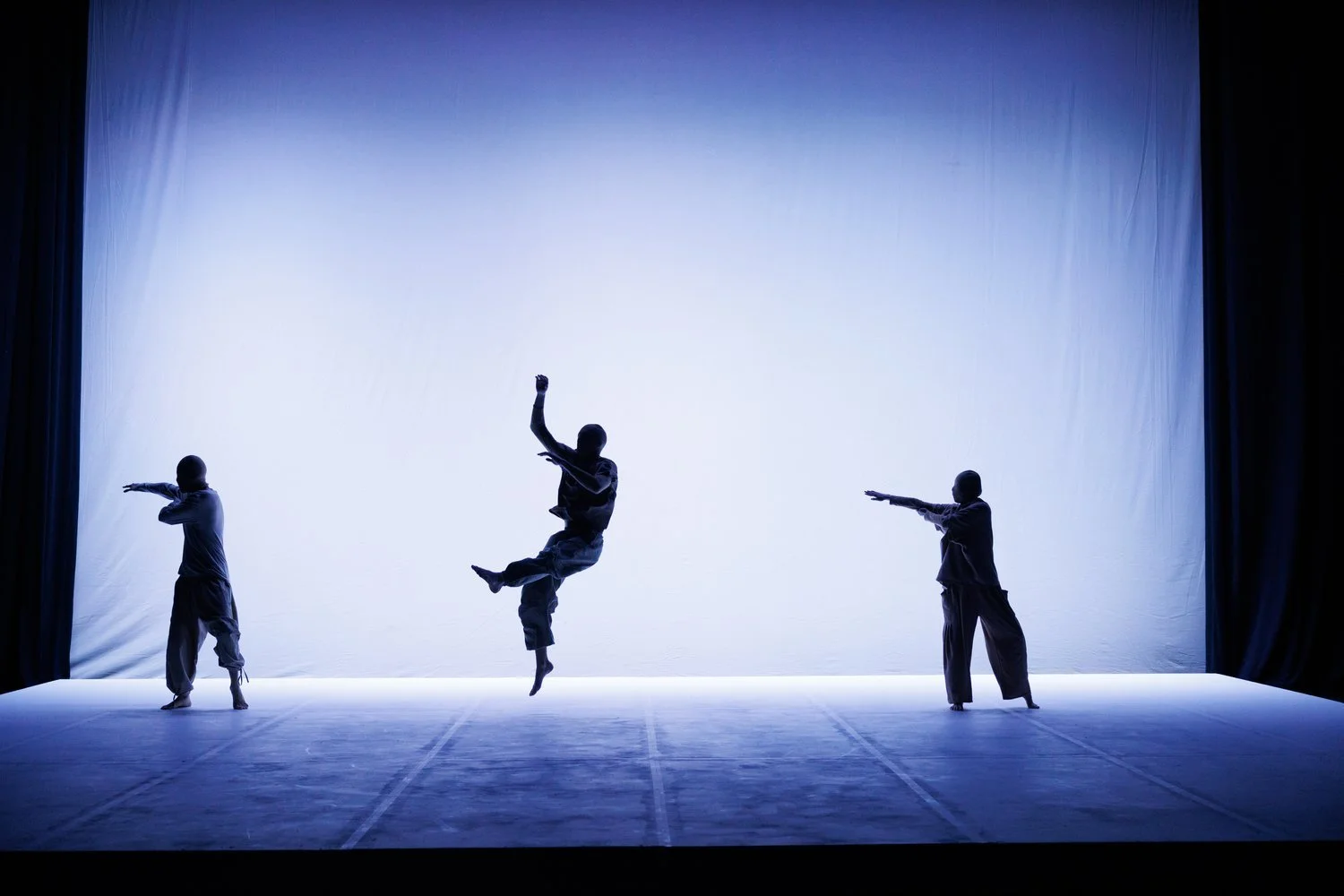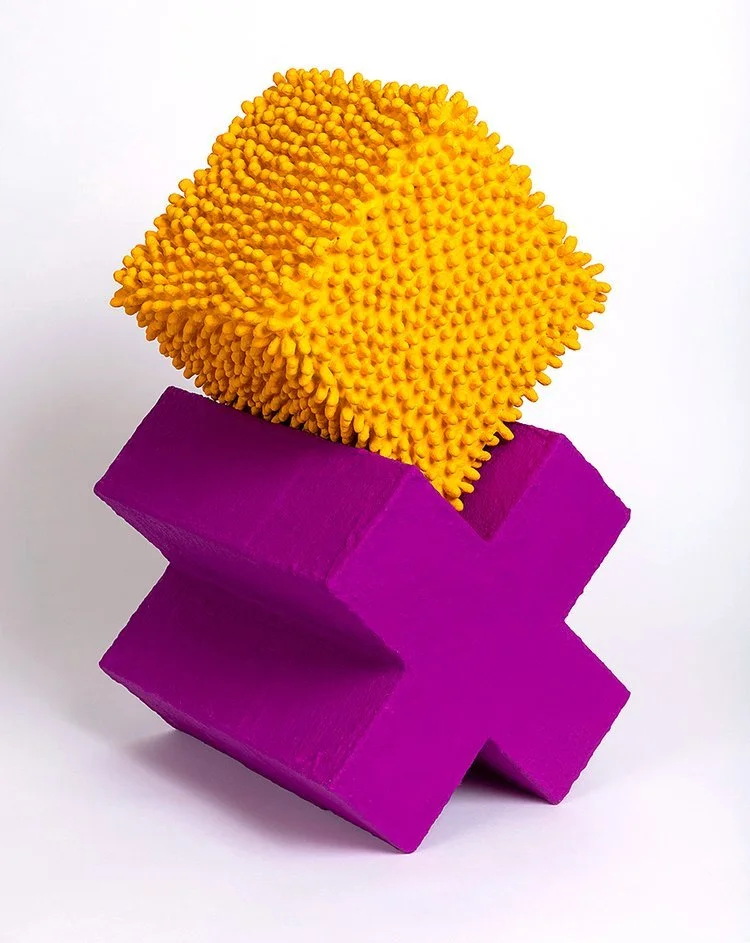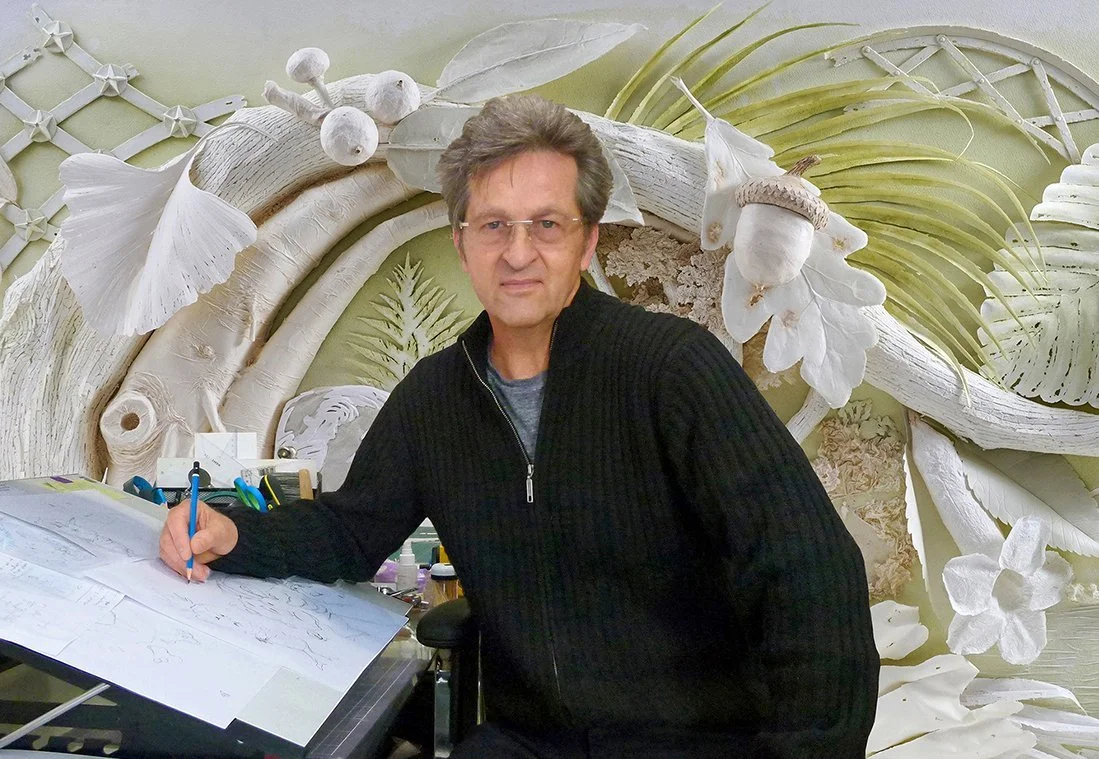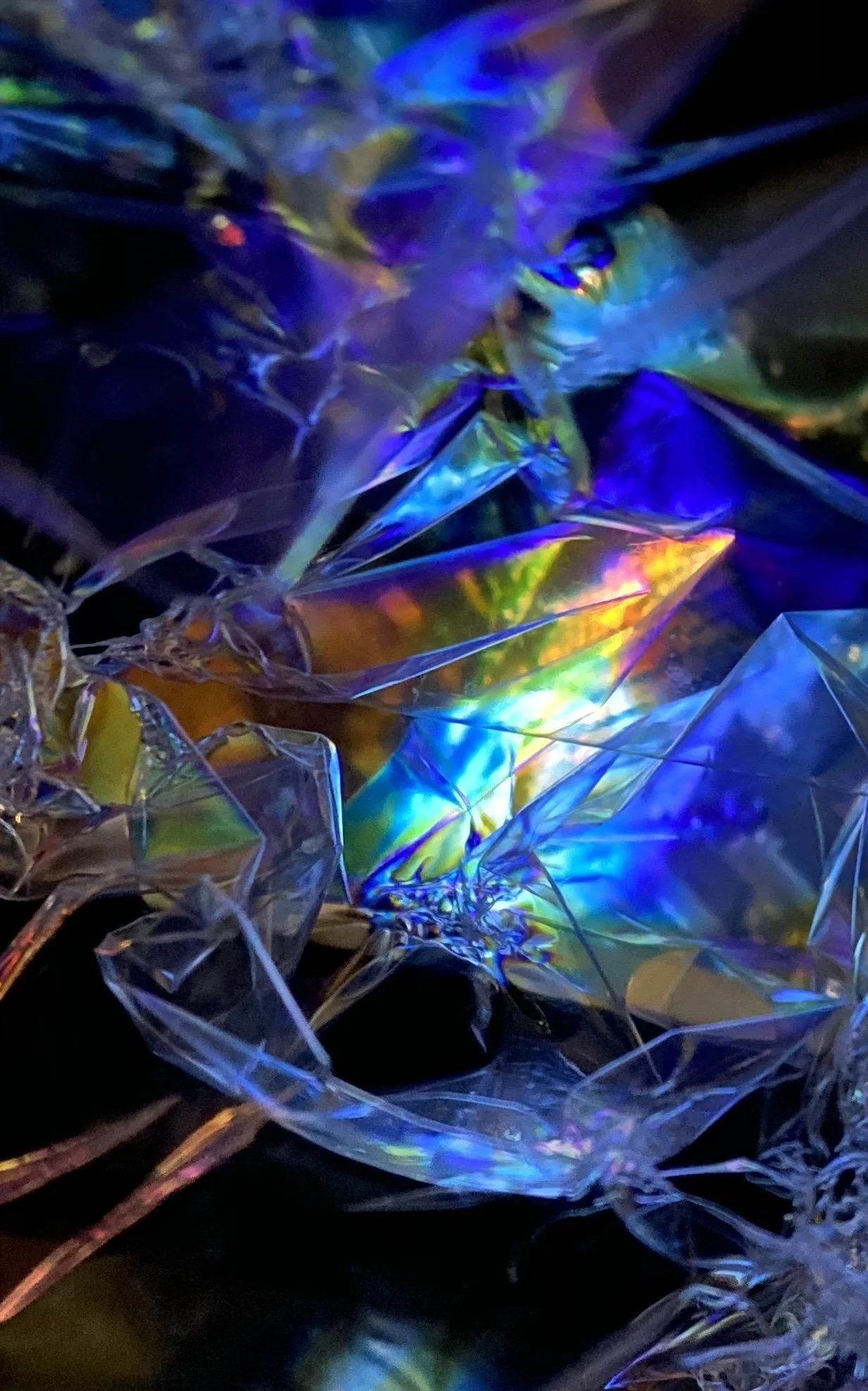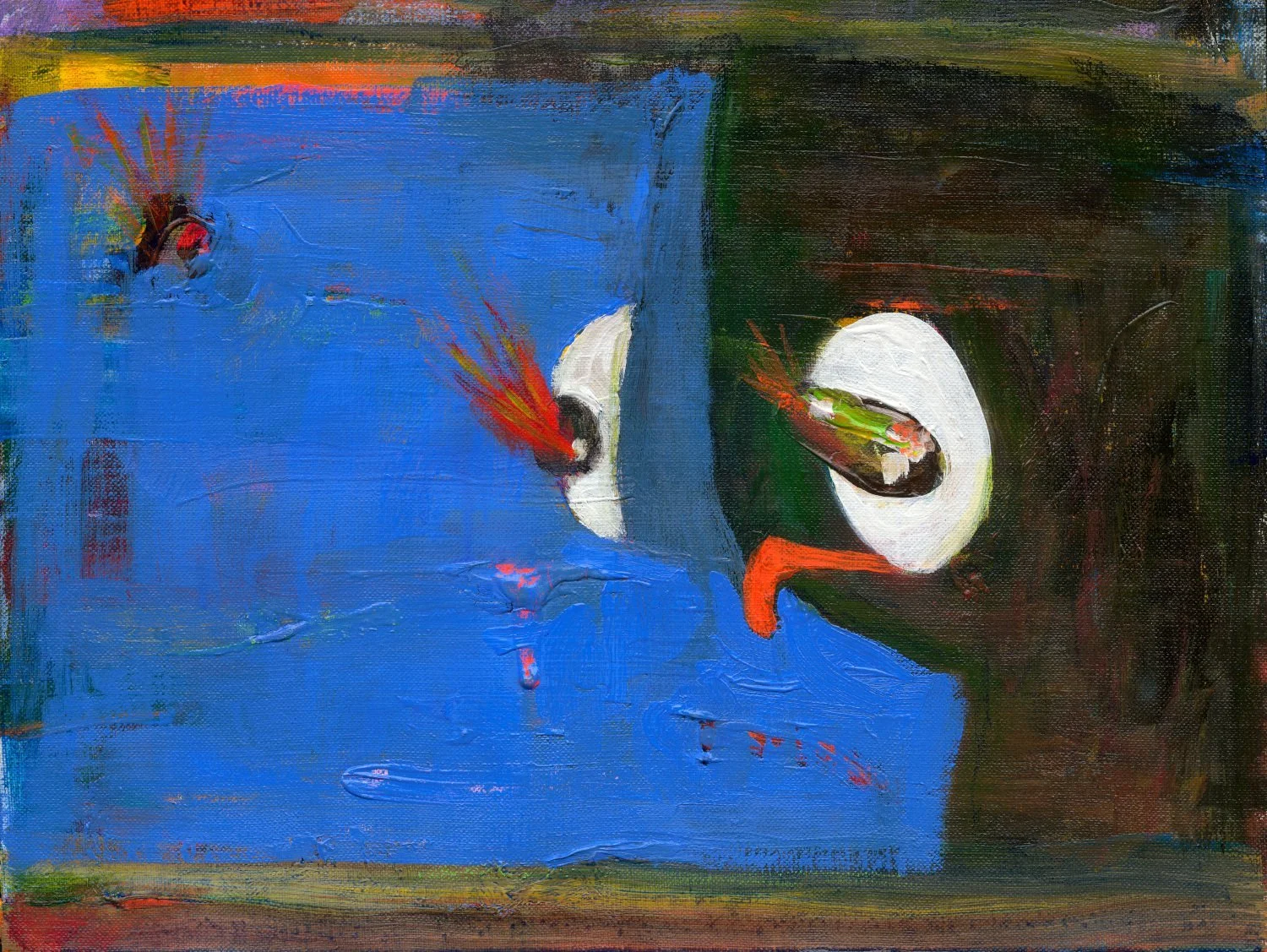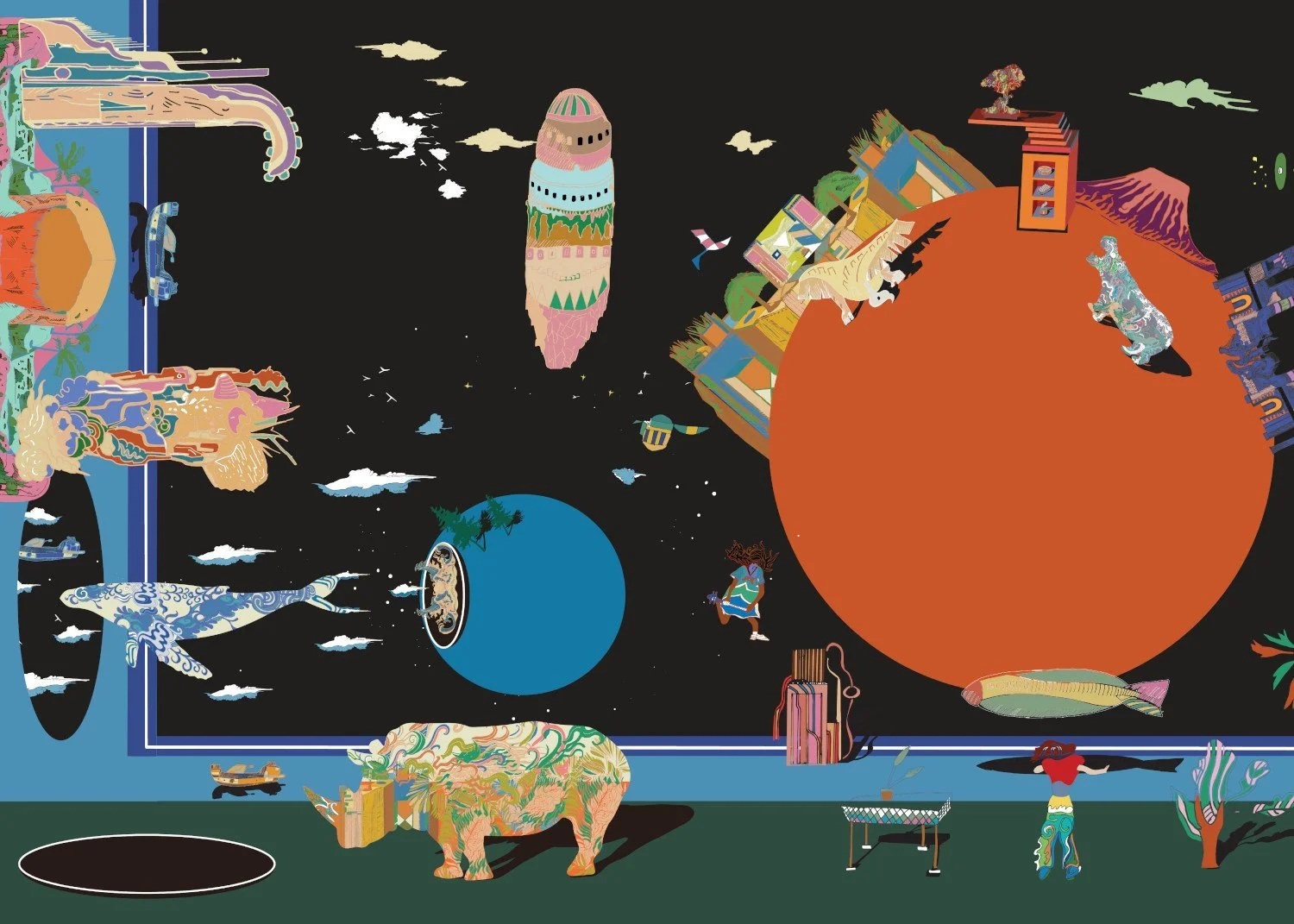Alina Holovatiuk is an up-and-coming Ukrainian architect, designer, and CGI/2D artist. She is a founder of the "InTempo" app & case startup against panic attacks and the international social experiment "Architecture & Happiness" engaging 5000 people around the globe, aiming to find out the correlation between architecture and well-being.
INTERVIEW | Robert West
West has established a unique painting language that has been created through the combination of original and derived techniques, executing paintings that represent the now as he sees it. In his ongoing series Borderline Painting West works within abstraction and focuses on colour, energy, form, and technical expansion. His broad range of methodology forms bodies of work that are dynamic and non linear.
INTERVIEW | Yunah Seo
Yunah Seo is a South Korean artist, currently based in London. Her practice considers the internal and attempts to visualize inner reactions relating to personal circumstances, consisting of beliefs, emotions, perceptions, philosophies, and the notion of creation. She combines images and memories from her own life, laying them out across her materials in order to consider and develop intuitive insight into her life.
INTERVIEW | Tyler James
Tyler James (b. 1992) is an American photographer and filmmaker born and raised in New Brighton and Golden Valley, Minnesota. James is known for using banal scenes to tell stories, evoke the emotions he feels, and document places before they are forgotten. James photographs while experiencing different emotions, imprinting emotions subconsciously into the works.
INTERVIEW | Kim Matthews
Kim Matthews makes nonobjective sculptures and drawings in various media. The frequent use of modular construction arose from practical concerns and spiritual ones, as repetition is evocative of the mantra meditation that structures her daily life. The ongoing Objects of Affection series was prompted by an urge to reclaim comforting childhood memories and honor the artists and designers whose work informed her early visual lexicon.
INTERVIEW | Yu-Ching Wang
Yu-Ching Wang was born in Taipei, Taiwan and now lives and works in New York. She is an interdisciplinary artist and works in video, performative action, spatial installation, and photography. Yu-Ching's recent works focus on exploring the social and cultural elements in the environment around her through the lens of her identity as a foreigner. She strives for the moment people become aware of unexpected realities provoked by her projects.
INTERVIEW | Ray Besserdin
Ray Besserdin has established a 32-year career that is recognised internationally with over 35 awards to date. He sculptures artworks dimensionally much like bas-reliefs working with “a palette of sheet-formed papers” that offer a wide spectrum of colours, textures, solidity, and delicate translucency. The stocks are mostly mould-made or handmade cotton, mulberry (Kozo), hemp and flax stocks from Europe and Asia.
INTERVIEW | Lin Li
Linda Lin likes both the texture of sand and stone and the mottled feeling of watermarks, so she has been researching how to simultaneously present the simplicity of texture and the fluidity of watermarks in her pictures. She tries to find a strange harmony in this contradiction and finds a space of balance between Western classical sculpture and Eastern traditional artistic conception.
INTERVIEW | Hua Huang
Huang Hua is a Chinese photographer and media expert, currently based in Europe. Due to his life experience, Hua Huang is interested in Eastern mysticism culture and is sensitive to the so-called "truth" of society. In the past two years, because of the epidemic, Huang Hua has begun to focus more on the existence of individuals in the family and the isolation of individuals from society.
INTERVIEW | Lena Silva
Lena Silva is a contemporary, figurative, classical artist, of Portuguese origin, and she has resided most of her life in the United Kingdom. She enjoys working with a variety of mediums, from pencil graphite to pastels and watercolours. However, her favourite medium to work with is oils because of their texture, vibrant colours, and flexibility of shading and blending.
INTERVIEW | Monika Katterwe
Monika Katterwe is a German photographer based in Luckenwalde. Using the Tyndall effect, Monika started by visualizing the light rays in different media and observing the interaction of light with crystals. She questions her observations on the formation of space in the fluid through the comparative analyses with scientific publications on this topic.
INTERVIEW | Silvia Felizia
Silvia Felizia is a contemporary abstract artist born in Argentina and currently living in the USA. Her work talks about the presence - and the power - of art made by women, and rethink how women see their lives in the current world and keep growing no matter what society and stereotypes dictate, bringing a different dimension of liberation and knowledge.
INTERVIEW | Suly Bornstein-Wolff
Suly Bornstein-Wolff creates objects, installations as well as paintings. Usually creating large-scale paintings, her subject varies from landscape to architecture, from figurative to abstract. Esthetics is a major focus in both her paintings and objects. By using readymade material, she emphasizes the quality and the beauty of the object, as if it was a jewel.
INTERVIEW | Jongbum Kim
Jongbum Kim is a New York-based designer, artist, and illustrator who explores the ideas of gender and multicultural communities through the medium of cloth. With a strong belief in seeing and experiencing the world firsthand, Jongbum’s designs are filled with color and symbolism, both literal and figurative, engaging the viewer and provoking them to respond.
INTERVIEW | Yan Yang
Yan Yang is a painter, installation artist, fashion art designer, and textile pattern designer. She is based in Chicago, IL. Yan believes that art and design are connected, and she often combines painting and fashion to create large-scale installations. Her work reflects the psychological healing effect of fashion art on people. Her art series "Standard Smile" hopes to give people the confidence and courage to face trauma and be able to heal.
INTERVIEW | Wei Ting Chen
Wei Ting Chen was born in Tainan, he uses a lot of childhood memories and symbolic figures such as teddy bears, antique toys, intuitive graffiti drawings, costume characters, and so on. With a background in literature, his painting started as diary recordings, which tend to be in a written form. In order to seek more opportunities for exchange with artists and new projects, he currently lives and works in Tokyo.
INTERVIEW | Taweechob Pinthong
Taweechob Pinthong is an artist and illustrator based in Bangkok. His illustration translates the unwavering love you feel for all living things without question, that you extend knowingly without expectations for anything in return. His style and technique are very dynamic because he is still in the process of experimenting. His body of work based on philosophy seeks to understand fundamental truths.
INTERVIEW | Aomi Kikuchi
Aomi Kikuchi’s work is based on Japanese aesthetic principles and the teachings of the Buddha, such as “Wabi-sabi” and “Mono-no-aware”. It addresses infinity as the succession of fleeting and brittle activities. With freedom and flexibility, she combines acquired knowledge and experiment and creates art to inspire dialogue and reflection on these concepts through materials and aesthetic philosophies.
INTERVIEW | Cynthia Grow
Cynthia Grow's work is informed by literature, poetry, philosophy, and film. She explores the interstices between art and language, engaging themes of memory, desire, and complex interpersonal relationships, playing on the idea of ambiguity, the liminal, and the spaces in between. Her latest series, Love Letters, is a collection of love letters by famous lovers throughout the ages.
INTERVIEW | Jiaqi Pan
Jiaqi Pan is a Chinese photographer, currently living and working in New York. Her series Drive-thru focuses on the working class, specifically women in the service sector. These photographs celebrate female African-Americans as individuals, working in the low-wage, fast food industry. This body of work reveals spaces and environments we encounter but sometimes overlook in our everyday lives.





